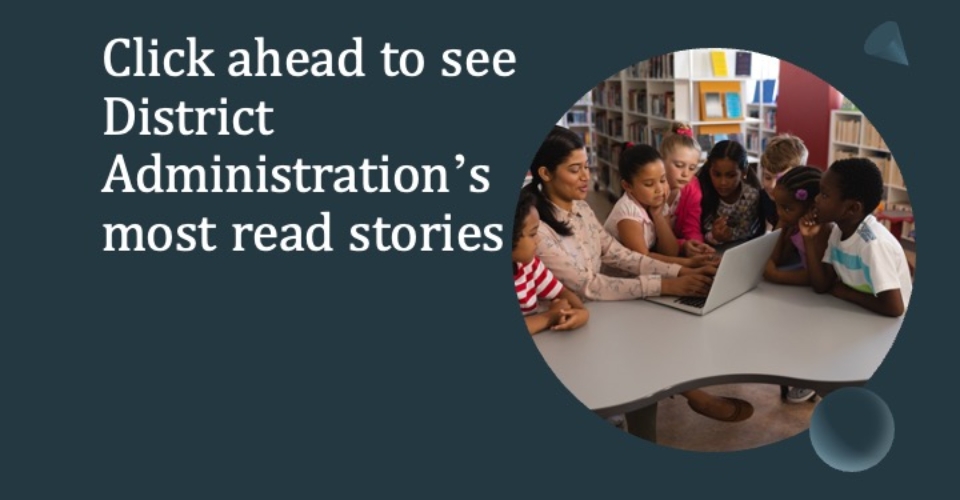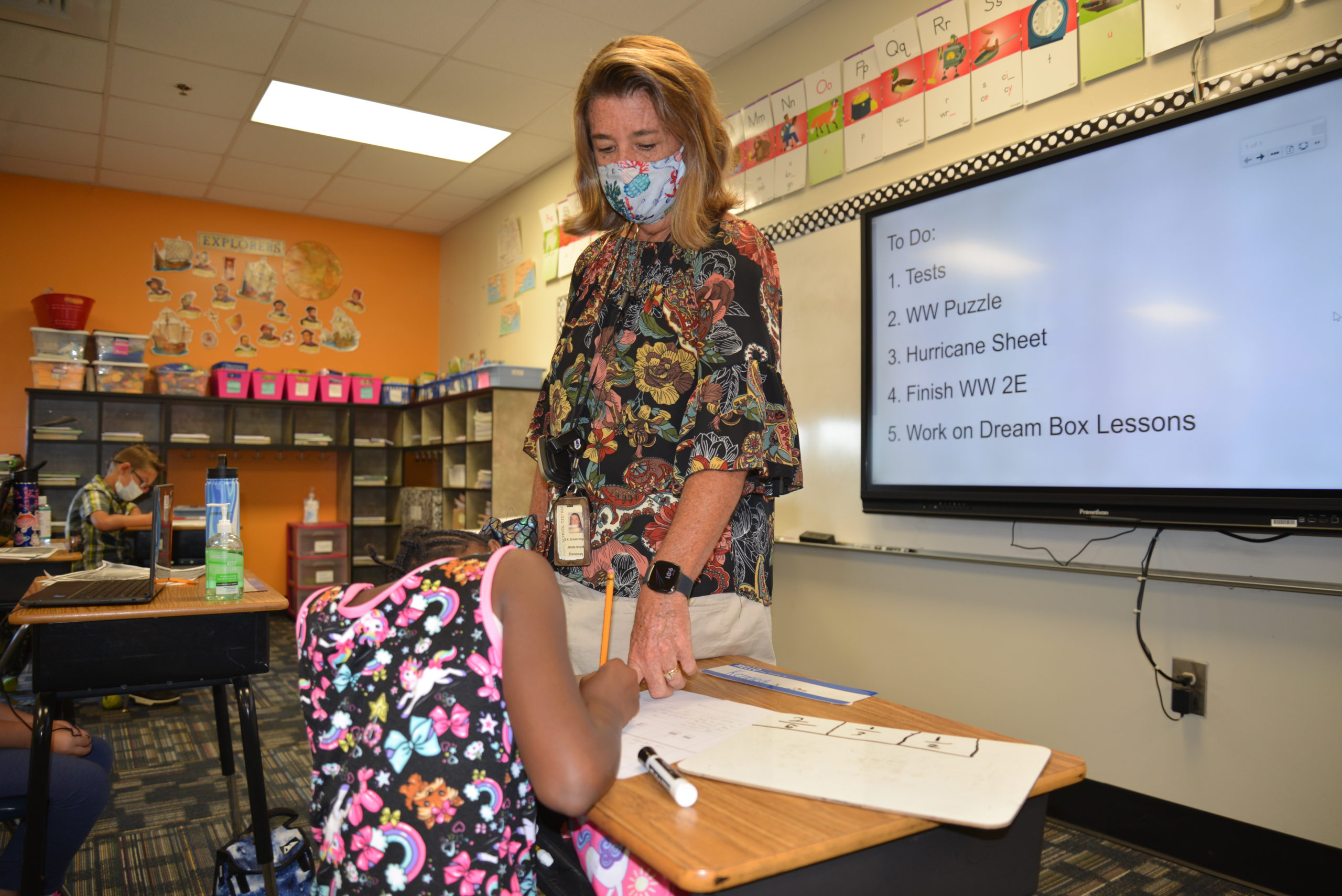Small does not mean rural for the Pottstown School District, an urban school district of 3,300 students about 50 miles outside Philadelphia. What it does mean, Superintendent Stephen Rodriguez says, is several decades of underfunding for a system that has a poverty rate of over 70%.

“As a result of having few resources and the lowest-paid professional staff in the county, our students have not performed to their academic potential and some even suffer from self-esteem issues,” Rodriguez, who has served Pottstown as superintendent since 2017, tells District Administration.
Still, the recent infusions of COVID relief have funded new staff at the high school, which, Rodriguez says, has helped Pottstown’s graduation rate “rapidly increase by leaps and bounds.” Implementation of a “house model” at the middle school is improving academic outcomes and reducing negative behaviors.
“With more resources, we have been able to make a real difference for students and the community,” says the one-time high school principal who began his career as a substitute teacher. “Parents have noticed, and other communities have noticed, but being able to continue on this path will require appropriate and fair funding, which is still a question mark for future years.”
Here’s what else Rodriguez has to say about the bright spots and barriers in his district:
1. Describe the Pottstown School District and some of the unique challenges and unique assets of urban school districts.
The Pottstown School District is a small urban town 50 miles outside Philadelphia, Pennsylvania. We are a post-industrial boomtown with a special education rate of 23% and a poverty rate of over 70%. All of our students receive free breakfast and free lunch. We are very diverse with approximately 33% white, 34% Black, 19% Hispanic, 13% two or more races, and 1% Asian.
We share contiguous borders with the Borough of Pottstown and are five and a half square miles with 23,000 residents and 3,300 students. We have a district-run Pre-K Counts program available for those parents who want to get their children started early. It is a model throughout the state for collaboration with community partners. We have four elementary schools, grades K-4, each with an average enrollment of 330 students. Our middle school is grades 5th through 8th with 900 students and our high school is 9th through 12th also with 900 students.
The biggest unique challenge the Pottstown School District has is being a highly underfunded entity for several decades. As a result of having few resources and the lowest-paid professional staff in the county, our students have not performed to their academic potential and some even suffer from self-esteem issues. Here is a short list of our challenges:
- Adequate and appropriate funding
- Competitive salaries for teaching positions especially in the area of special education
- Healthy tax base within the community which has decreased over the past decade
2. What are you and your team doing to support students’ mental health?
Counseling and support services: Thanks to COVID recovery funding and the Pennsylvania legislators’ recent additional investment in schools we have had the opportunity to provide both staffing and programming to address the heightened mental health needs of our students. First, we hired support staff including a home and school visitor, a social worker, and school counselors for each of our schools. This has allowed us to address significant issues our students are presenting instead of being overwhelmed with negative behaviors, classroom outbursts, and physical confrontations. Students are participating in positive support measures and as a result, we have seen a decrease in negative behaviors districtwide for the first time since returning to in-person instruction.

PBIS and mentorship: We have also instituted a Positive Behavior Intervention Support System in each of our school buildings, helping students to understand the positive behaviors that help them to become successful. We have added clubs and sports to our middle and high school programming to give students extra opportunities during and after school. We are supporting community mentorship programs that provide students with excellent role models and we especially target minority adult role models to help our students explore future possibilities and stay focused on their educational goals.
3. Is your district experiencing teacher shortages? If so, how are they impacting your schools and how are you responding?
The Pottstown School District is not immune to the statewide and nationwide shortage of teachers. Even when we are able to fill positions, competition is fierce and we often lose teachers to more affluent districts. We have had multiple positions open throughout the entire school year and some buildings have not been fully staffed. Our teachers who show up every day for students end up getting almost no break because they are covering classrooms that have no teachers. We have had to fill some classrooms with more students than normal and have put other teachers on permanent overload schedules to make up for the loss.
4. What are you most excited about that is happening in your district?
When we have more we can do a lot more! Thanks to COVID recovery and additional resources, we have a myriad of programming that is having an immediate effect on our school district. We’ve never been more encouraged by the excellent student response and positive growth they are demonstrating. As we all suspected, when given the opportunity our students outperform our expectations. Here’s a short list:
- Implementation of a new curriculum at the elementary level called ‘Fundations’ has helped our students to read at a faster pace than we have seen in 25 years.
- Implementation of a new ‘house model’ at our middle school with purposeful oversight of each student by grade level. The negative behaviors we track to assess school climate have been reduced by more than 50% and student outcomes are on track to be higher than in the last several years.
- High school programming has been supported with new staff and our graduation rate continues to rapidly increase by leaps and bounds. Our academic growth scores on Keystone Assessments indicate double-digit increases over the last year.
DA Leadership series: ‘It was the best professional development that I had ever been through’
5. What are the top 3 goals for the rest of this school year and 2023-24?
- Fully implement a multi-tiered system of support for students at all levels which is a core part of our comprehensive plan.
- Prepare students and staff for the implementation of new curriculum and software tools next year that will help us fulfill our mission: To prepare each student, by name, for success at every level.
- Fully implement the mental health supports for both students and staff we began last September.
6. Aside from mental health and teacher shortages, what are your biggest concerns?
For an urban school district like Pottstown, our biggest concern is in sustaining the excellent growth we started this year. With more resources, we have been able to make a real difference for students and the community. Parents have noticed, and other communities have noticed, but being able to continue on this path will require appropriate and fair funding, which is still a question mark for future years.
7. What’s at the top of your district’s list of must-have-ASAP?
- Fiscal security for the future
- Special education teachers and a solid teacher pipeline
- Continued access to mental health support for students and staff
8. Do you have a good relationship with your school board? If so, what are the keys to collaborating effectively with the board?
Rounding out my seventh year as superintendent, I’m happy to report that the school board and administrative team have an excellent relationship and are mission-driven in our approach to leading the district. I believe the key to collaborating effectively with the school board is continuous communication and honesty, especially in difficult situations.
Relationships take time and effort to build but are very easily disrupted and destroyed. If both the board and administrative team are sensitive to the importance of trusting relationships and don’t take each other for granted, the students and the community will be the beneficiaries of positive, excellent sustained leadership.










